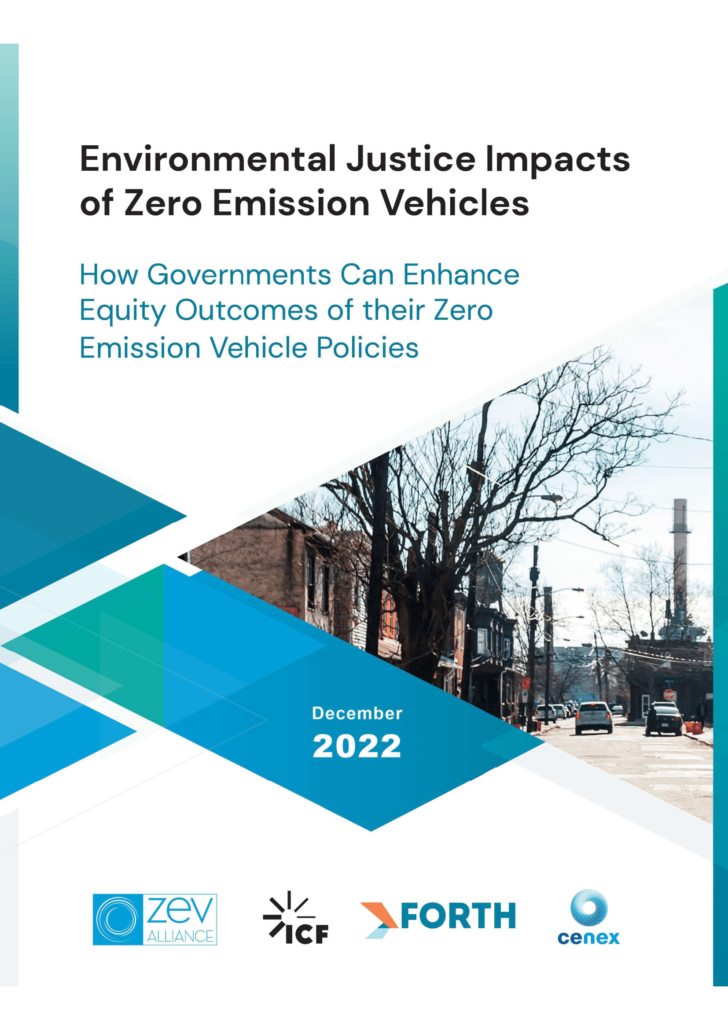Despite significant improvement in air quality and public health over the past decades, many regions, especially low-income and disadvantaged communities, still suffer from high levels of air pollution. Emissions from the transportation sector are a leading contributor to ambient air pollution and adverse public health. Tailpipe emissions from cars and trucks contribute to nitrogen oxides (NOx) emissions, a precursor to ozone, as well as fine particulate matters (e.g., PM2.5).
The issue is much more aggravated in low-income and disadvantaged communities; many studies worldwide have shown that these regions often bear the greatest burdens of air pollution from the transportation sector. Part of this is because of their close proximity to major roadways and freight facilities.

-
Project Partners
4
-
Location(s)
California, Michigan, and England
-
Starting Year
2022

Partnering with the consultants from ICF and our GSMP partners Cenex and Forth Mobility, Cenex NL explored the barriers for an equitable transition to zero emission vehicles and provides recommendations for government agencies. The research was conducted for the International Zero-Emission Vehicle Alliance (ZEV Alliance), a collaboration of national and subnational governments working together to accelerate adoption of ZEVs.
Project brief
Three ZEV markets – California, Michigan, and England – were selected to conduct quantitative analyses. Certain observations for the European and American markets were qualitatively explained. The quantitative research consisted of an analysis of ZEV ownership and its relationship with various socio-demographic and EJ indicators. Looking for disparities in ZEV adoption, and of the major factors driving them in each market.
For the qualitative analysis, a comprehensive EJ stakeholder engagement was conducted in the US and Europe to identify major barriers to adoption of ZEVs within lower-income regions and disadvantaged communities. The engagement consisted of semi-structured interviews and online workshops with in total 15 EJ experts and 24 organizations dedicated to EJ
The goals of this research were to highlight the existing disparity in ZEV ownership, quantify the EJ benefits of ZEVs, and provide policy and program recommendations that various government agencies can implement to enhance the EJ outcomes of their ZEV policies.
Results
The stakeholder engagement resulted in the identification of three major barriers of ZEV adaptation.
- Affordability: ZEVs continue to remain unaffordable for lower income households, existing incentive portfolio has not made ZEVs sufficiently affordable.
- Access to charging infrastructure: Lower income regions, especially those who rent or live in multi-family housing, often do not have access to home charging.
- Availability of mobility options: EJ stakeholders from North America and Europe shared that not every community member is interested in owning a car if there are alternative mobility options that are preferable.
To solve these barriers we developed a list of policy recommendations that various government agencies and policymakers can consider. The main recommendations are:
- Leverage the Expanding Pre-Owned ZEV Market: The pre-owned vehicle market can provide great opportunities for access to more affordable ZEVs.
- Public Charging and Fuelling Infrastructure: Access to ZEV charging stations is a key barrier to ZEV adoption in lower income regions, especially for households without home chargers.
- Targeted Incentives toward Lower Income Regions: The high upfront cost of ZEVs is one of the major barriers to adoption.
- Support Regions’ Mobility Alternatives: We believe there is great opportunity for governments to invest in clean alternative modes of transportation. It will not only enhance mobility, but lead to reduced traffic congestion and air quality improvements.
- The Role of Electrifying Medium- and Heavy-Duty Trucks: These are one of the major emissions sources contributing to public health issues in lower income regions and disadvantaged communities.
While the focus of the report is on the California, Michigan, and England markets, the outcomes of this research could be useful to all who seek to increase accessibility and equity of ZEVs.
Cenex NL key contributions
The team captured the views of EU-based EJ experts, from academia and NGOs, in a series of interviews and workshops. Furthermore, Cenex NL performed a quantitative analysis on the relation of EV roll-out and socioeconomic metrics to better understand the EJ of relevant policies in different EU countries.



